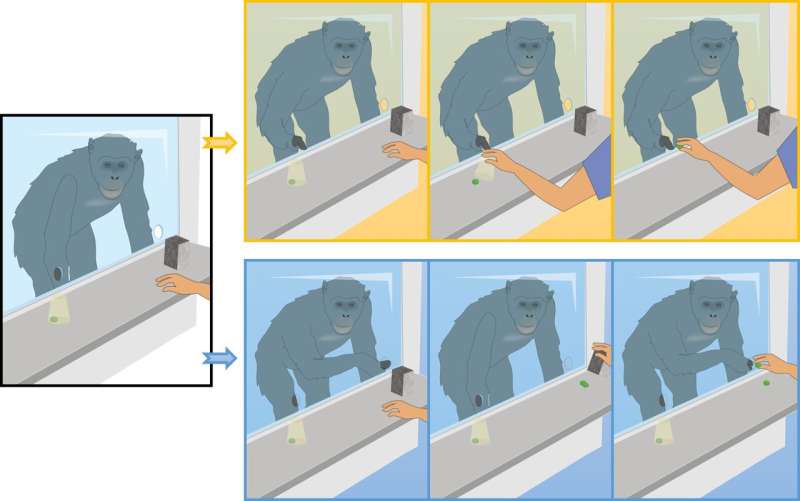This article has been reviewed according to Science X's editorial process and policies. Editors have highlighted the following attributes while ensuring the content's credibility:
fact-checked
peer-reviewed publication
trusted source
proofread
Children are more curious than apes, often choosing a 'mystery box' over a certain reward

Children are more curious to explore the unknown than great apes, but after a glimpse of the potential rewards, apes learn to investigate uncertain options, Alejandro Sánchez-Amaro at the Max Planck Institute for Evolutionary Anthropology in Germany and Federico Rossano at the University of California San Diego in the United States report in the open-access journal PLOS ONE, May 31.
Humans are curious creatures. We are motivated to explore and investigate mysterious or unknown objects, but do other great apes share this innate curiosity?
To investigate, researchers tested whether captive great apes and human children would choose an unknown option over a visible reward. In a series of experiments, they asked adult chimpanzees (Pan troglodytes), gorillas (Gorilla gorilla), bonobos (Pan paniscus), and orangutans (Pongo pygmaeus) to choose between two up-turned plastic cups covering some grapes. One cup was transparent and contained a small reward, while the other was opaque, hiding a larger reward. Children aged three to five years old were given a similar task, with stickers as a reward.
On average, children were more likely to forego the certain reward in favor of the mysterious one—85% and 77% of children chose the opaque cup at least once during the fourth and fifth studies respectively, compared to 24% of apes in the third study. When the hidden reward was briefly revealed and participants were allowed to change their choice, over 88% of apes and children chose the opaque cup with the larger reward at least once.
The study is the first to compare curiosity in human children and great apes using the same experimental set-up. The results suggest that children may be more motivated to explore the unknown, or less risk-averse than great apes, the authors say. However, after learning about the rewards of exploring uncertainty, apes quickly applied this knowledge to future scenarios.
The authors add, "In this comparative set of studies, we explored whether children and non-human great apes would be curious to forego a visible benefit under a transparent cup to explore an uncertain option under an opaque cup. We found that children were more likely to explore the uncertain option than the great apes when no other information was available. Only after we unveiled the content of alternative opaque cups, which yielded better outcomes than the visible options during an intervention phase, did apes quickly overcome their initial risk aversion towards uncertain options. Children continued engaging in some level of exploration to diversify their options."
More information: Comparative curiosity: How do great apes and children deal with uncertainty?, PLoS ONE (2023). DOI: 10.1371/journal.pone.0285946
Journal information: PLoS ONE
Provided by Public Library of Science




















